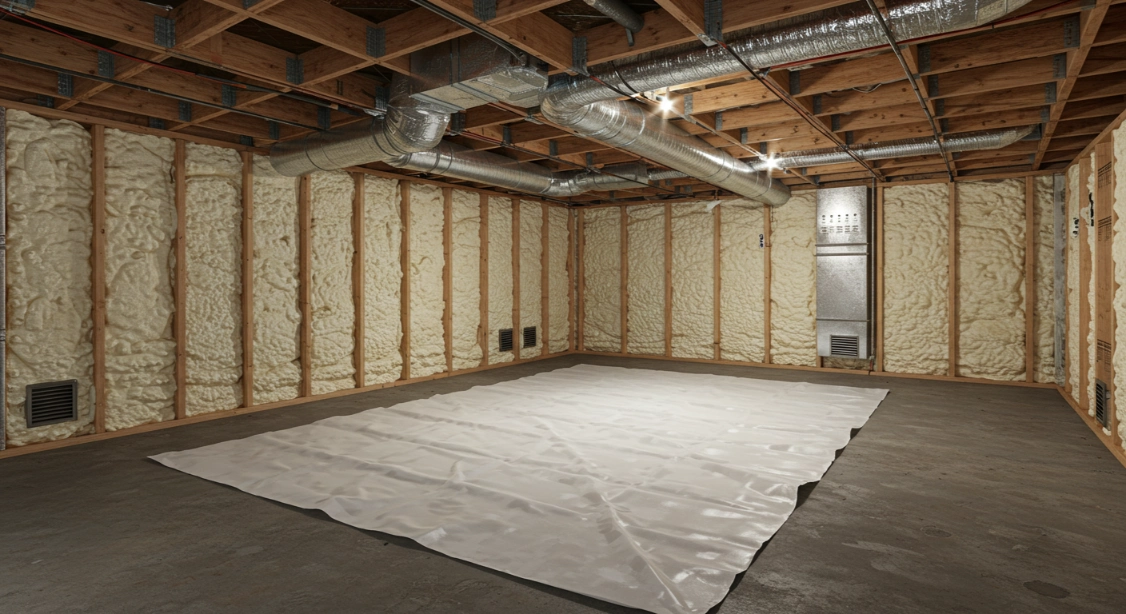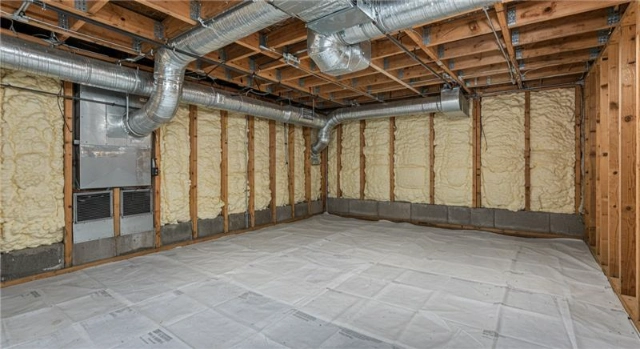In Hyde Park, TX, crawlspace ventilation strategies that best complement insulation are those that align with the local humid subtropical climate. The most effective combination involves sealing crawlspaces with a vapor barrier and using closed cell spray foam insulation. Mechanical ventilation or dehumidification should be integrated when necessary to manage moisture levels.
Improper pairing of ventilation and insulation can lead to trapped humidity, mold growth, and reduced thermal performance. This article explains the optimal practices backed by field experience and current building science standards. All recommendations are based on direct application in Central Texas conditions.
Best Crawlspace Ventilation-Insulation Pairings
| Ventilation Practice | Insulation Type | Ideal Use Case | Pros | Cons |
|---|---|---|---|---|
| Sealed Crawlspace + Dehumidifier | Closed Cell Spray Foam | High humidity areas with risk of moisture intrusion | Air-tight seal, moisture control, energy efficient | Higher upfront cost |
| Conditioned Crawlspace | Closed Cell Spray Foam | When HVAC ducts run through crawlspace | Stable temp, protects HVAC, improves comfort | Requires integration with HVAC |
| Passive Vents + Vapor Barrier | Open Cell Spray Foam | Low-risk moisture areas; older homes needing retrofits | Low-cost option, easy to retrofit | Less effective moisture control |
| No Vents + Active Exhaust Fan | Closed Cell Spray Foam | Tight soil conditions or frequent groundwater presence | Keeps crawlspace dry, discourages mold | Needs reliable electricity |
Technical Specs of Insulation Materials Used in Crawlspaces
| Material | R-Value per Inch | Vapor Retarder | Water Resistance | Air Barrier | Application Suitability |
|---|---|---|---|---|---|
| Closed Cell Spray Foam | R-6.5 | Yes | Excellent | Yes | Ideal for moisture-prone spaces |
| Open Cell Spray Foam | R-3.7 | No | Moderate | Yes | Retrofit projects with ventilation |
| Fiberglass Batts | R-3.2 | No | Poor | No | Rarely recommended in humid areas |
| Rigid Foam Board | R-5.0 | Yes (if foil-faced) | Good | Yes | Useful for vented crawlspaces |

Local Conditions That Influence Ventilation Strategy
Hyde Park experiences average summer highs above 95°F with humidity often above 60%. Soil in this area retains moisture easily, and many older homes were not originally built with sealed crawlspaces. These conditions make moisture control the primary factor in determining insulation success.
Field experience shows that vented crawlspaces in this region frequently accumulate moisture under insulation layers. Closed cell foam offers superior thermal and vapor barrier properties, especially when paired with mechanical moisture management.
Bonus Tip: Always check for existing mold or rot before installing insulation. Sealing a crawlspace with pre-existing moisture problems can accelerate wood decay.
Market Data and Building Science Findings
- According to the Building America Solution Center (U.S. DOE), sealed and conditioned crawlspaces improve energy efficiency by 15-18% in humid climates (source).
- A 2023 study by the Texas A&M Energy Systems Lab found that unvented crawlspaces in Central Texas homes had 40% lower mold spore counts compared to vented ones (source).
- ICC Building Code 2021 requires conditioned or mechanically vented crawlspaces when using foam insulation in humid zones.
Things to Consider Before Making a Decision
- Crawlspace History: Was the area previously vented? Any signs of past flooding or mold?
- Moisture Levels: Has a vapor test or humidity reading been conducted?
- Access & Clearance: Is there sufficient room for proper sealing, insulation, and mechanical installation?
- Integration with HVAC: Can the existing HVAC system support crawlspace conditioning if chosen?
- Budget Range: Consider both installation and maintenance costs for mechanical systems.
Bonus Tip: Always use termite-resistant foam products in areas with known subterranean termite activity.
Services Stellrr Insulation & Spray Foam Provides for This Scope
- Crawl Space Insulation: Seals and insulates crawlspaces using open or closed cell spray foam depending on moisture risk.
- Insulation Removal: Safe removal of old, damaged, or mold-contaminated insulation to prevent cross-contamination.
- Closed Cell Spray Foam: High-performance insulation offering strong vapor resistance for sealed crawlspaces.
- Open Cell Spray Foam: Used in projects with passive ventilation or when budget or structural limitations require it.
Common Questions About Crawlspace Ventilation and Insulation
How do I know if my crawlspace should be sealed or vented?
Measure humidity and inspect for standing water or mildew. Sealed crawlspaces work better in humid or flood-prone areas.
Can I install insulation without modifying ventilation?
No. Ventilation must align with insulation type or moisture buildup can occur.
What happens if I use fiberglass batts in a sealed crawlspace?
They absorb moisture, sag over time, and promote mold growth. Foam is better suited.
Does my HVAC need changes for a conditioned crawlspace?
Possibly. It may require ductwork adjustments or additional vents.
Get Expert Insulation Guidance
For professional assessment and installation of crawlspace insulation and ventilation strategies in Hyde Park, TX, contact Stellrr Insulation & Spray Foam.
Phone: (512) 710-2839 Email: info@stellrr.com
Frequently Asked Questions
What R-value is best for crawlspace insulation in Hyde Park?
Use at least R-13. Closed cell spray foam at 2 inches delivers R-13 and vapor resistance.
How long does crawlspace insulation last?
Closed cell spray foam can last 20+ years without degradation when installed correctly.
Can open cell foam be used in high-humidity crawlspaces?
Only if paired with active ventilation and moisture monitoring. Otherwise, use closed cell.
Is sealing a crawlspace worth the investment?
Yes, for long-term moisture protection, energy savings, and air quality improvement.
Should insulation be applied to floors above the crawlspace too?
If the crawlspace remains vented, then yes. In sealed or conditioned spaces, wall insulation suffices.

